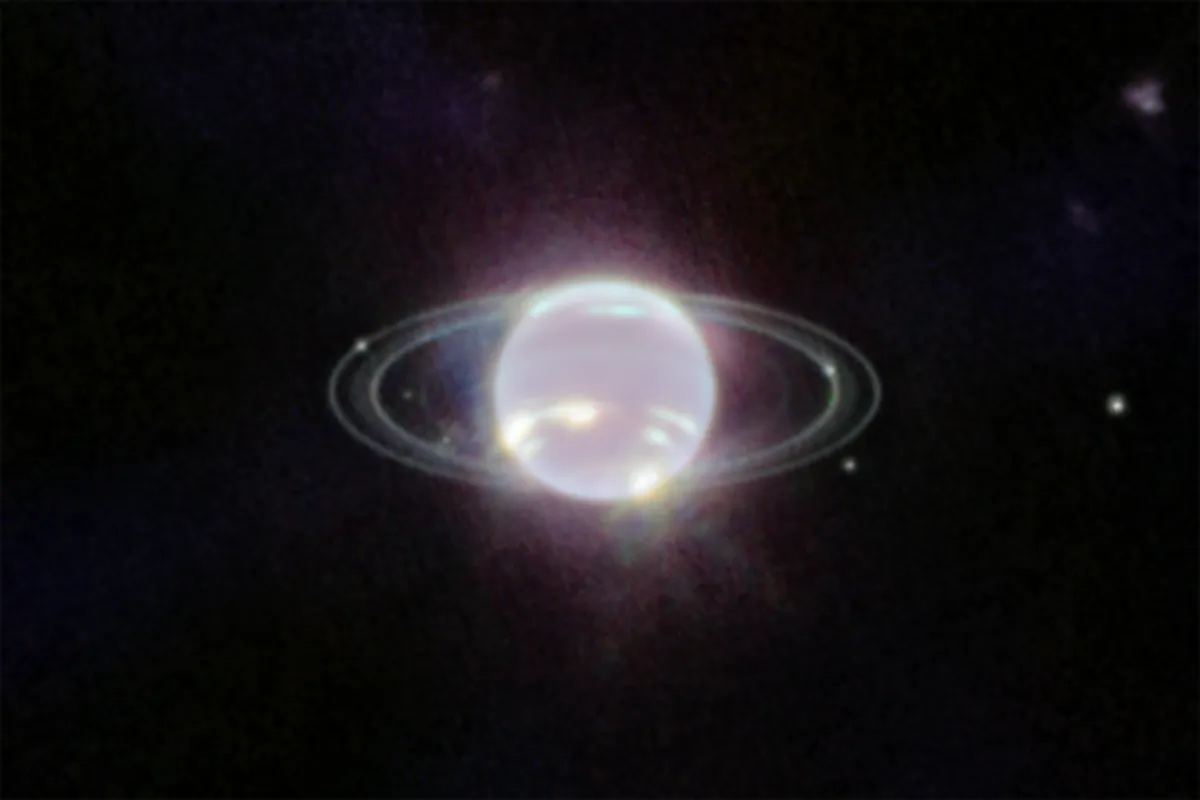The aptly-named Bullet Cluster is a huge structure in deep space that formed from the merging of two massive galaxy clusters 3.8 billion lightyears away.
Now the James Webb Space Telescope has given scientists the clearest, most detailed look yet at the chaotic aftermath, including the location of the elusive dark matter hiding within it.
More Webb science

Solving just what dark matter is made of is one of the biggest goals in physics right now.
And Webb has given scientists an insight into how it's distributed across this enormous region of space.
A crash course in cosmic cartography
The Bullet Cluster is not just two galaxy clusters colliding in slow-motion over billions of years, it’s also a physics lab for studying dark matter.
Dark matter is a mysterious substance that doesn’t emit or reflect light, but makes up most of the Universe’s mass.
Astronomers know it's there because it's the only way to account for the gravitational pull that's holding galaxies together.
Counting up all the mass of visible matter in galaxies alone – stars, dust and gas – doesn't reveal enough 'stuff' that could prevent a galaxy's stars from flying outwards into space as the galaxy rotates.
There must be some extra, unseen matter holding the galaxy's structure together. That unseens substance is known as 'dark matter'.
A team of astronomers led by PhD student Sangjun Cha of Yonsei University have used Webb’s near-infrared vision to weigh and map the mass of the Bullet Cluster more accurately than ever before.
Their study, published in The Astrophysical Journal Letters, includes the most comprehensive gravitational lensing dataset of this region to date.

Seeing the invisible
We can't directly see dark matter, but we can see its effects.
That’s where gravitational lensing comes in, a trick where massive objects like galaxy clusters bend and magnify the light from background galaxies.
It’s like watching light ripple across a pond, except in this case, the ripples are caused by dark matter warping spacetime.
“With Webb’s observations, we carefully measured the mass of the Bullet Cluster with the largest lensing dataset to date, from the galaxy clusters’ cores all the way out to their outskirts,” says Sangjun Cha.
"Webb’s images dramatically improve what we can measure in this scene, including pinpointing the position of invisible particles known as dark matter," says Kyle Finner, a study co-author and an assistant scientist at IPAC at Caltech in Pasadena, California.

Tracing the stars between galaxies
The team measured thousands of galaxies in Webb’s images to accurately 'weigh' visible and invisible mass in the galaxy clusters.
And they mapped and measured the light emitted by stars no longer bound to individual galaxies, known as intracluster stars.
Their findings are persuasive:. "We confirmed that the intracluster light can be a reliable tracer of dark matter, even in a highly dynamic environment like the Bullet Cluster," Cha says.
What's more, if these stars are bound to cluster’s dark matter, the team say it could get easier to refine what they know about dark matter.
In the new map of the Bullet Cluster, an image from Webb’s NIRCam (Near-Infrared Camera) is overlaid with data from NASA’s Chandra X-ray Observatory.
It shows hot gas in pink, including the bullet shape on the right side of the image.
Refined measurements of the dark matter, calculated by the team using Webb, are shown in blue.
Viewed as a whole, the new measurements refine the map of mass spread across the Bullet Cluster.
And this is revealing the history of the clusters involved in the merger.
For example, the galaxy cluster on the left of the image has an asymmetric, elongated area of mass along the left edge of the blue region.
This, say the team, is a clue pointing to previous mergers in that cluster.

A dark, mysterious giant
The team's study shows that dark matter isn’t just invisible, it’s eerily quiet.
Their observations confirm it doesn’t interact much, if at all, with itself. Or, as the study puts it: "dark matter shows no signs of significant self-interaction".
"As the galaxy clusters collided, their gas was dragged out and left behind, which the X-rays confirm," Finner says.
Webb’s observations show dark matter still lines up with the galaxies, and wasn't dragged away.

The bullet that shot twice
The dark matter map also suggests the Bullet Cluster may have gone through more than one dramatic collision.
That mass clump on the left could be the fingerprint of an earlier, or later, collision involving the larger cluster.
"A more complicated scenario would lead to a huge asymmetric elongation like we see on the left," says James Jee, co-author and professor at Yonsei University.
What's next?
The team say they’ve only uncovered part of the story.
"It’s like looking at the head of a giant," says Jee. "Webb’s initial images allow us to extrapolate how heavy the whole 'giant' is, but we’ll need future observations of the giant’s whole 'body' for precise measurements."
Enter the Nancy Grace Roman Space Telescope, scheduled to launch by May 2027, which will also give researchers expansive near-infrared images of the Universe.
"From NASA’s Nancy Grace Roman Space Telescope, which is set to launch by May 2027. “"With Roman, we will have complete mass estimates of the entire Bullet Cluster, which would allow us to recreate the actual collision on computers," Finner says.
